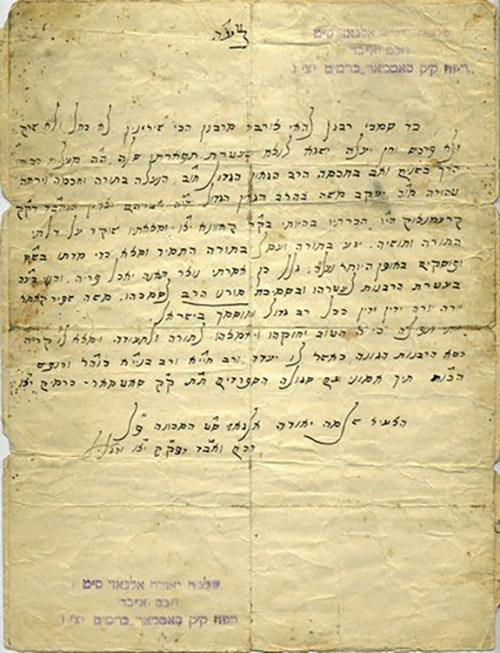




Remember that time when a Litvak fraudulently represented himself as a Turkish Sephardi scholar? It happened in Hungary in 1907.
Shlomo Friedlander “Algazi” (1860-1924) managed to fool many of the Talmudic scholars and rabbis of his time when he claimed to have found a “long lost” manuscript of a missing part of the Jerusalem Talmud.
The Russian-born (Vitebsk region) Friedlander posed as a Sephardic Jew from Turkey from the venerable Algazi family.
His first stop was Hungary because -as he would later explain- he viewed the Hungarian Jews as gullible and naive prey.
Interestingly enough, Friedlander- Algazi did not hide his knowledge of the Yiddish language from his audience. When asked how he, a purported Sephardi, conversed in ‘mamaloshen’ with such fluency, he claimed that his father was a shadar- an emissary sent by the religious trust to collect funds- who took him along as a young boy to Yiddish-speaking Eastern Europe.
The famous Kedem Auction House not long ago listed a letter of ordination by the fake Sephardi from Satu-Mare whose name was apparently Zusia Sussman. Calling himself “Shlomo Yehuda Algazi-Friedlander s”t” (his surname hyphenated as f-l), he refers to himself in his stationery letterhead as “Rabbi of the Sephardic Congregation of Satmar [and its] orchards.” By the way the initials samekh tet was mostly used by Sephardim although contrary to common misconception it does not stand for ‘sefardi tahor’ (pure sephardi), but rather safei tava (may his end be good). There are other theories as to its provenance. Friedlander, however, certainly utilized it in order to accentuate his false credentials.
Ironically, a member of the much more famous Teitelbaums of Satmar fame did found/lead separatist communities in that region (Nusach Sephard-Chassidic communities were referred to as “Sephardic” in places like Cluj-Klausenberg and Zenta). They chose that label because of the Modified Chassidic rite, “Nusakh Sefard” in which they prayed. To complicate the matter even further, there were authentic Sephardic Jews in regions of Transylvania and Romania (even Hungary) up until the Holocaust.
By Joel S. Davidi Weisberger
Joel S. David Weisberger runs Channeling Jewish History. You can find it on various social media platforms including Facebook and Twitter. He can be reached at yoelswe@gmail.com.









